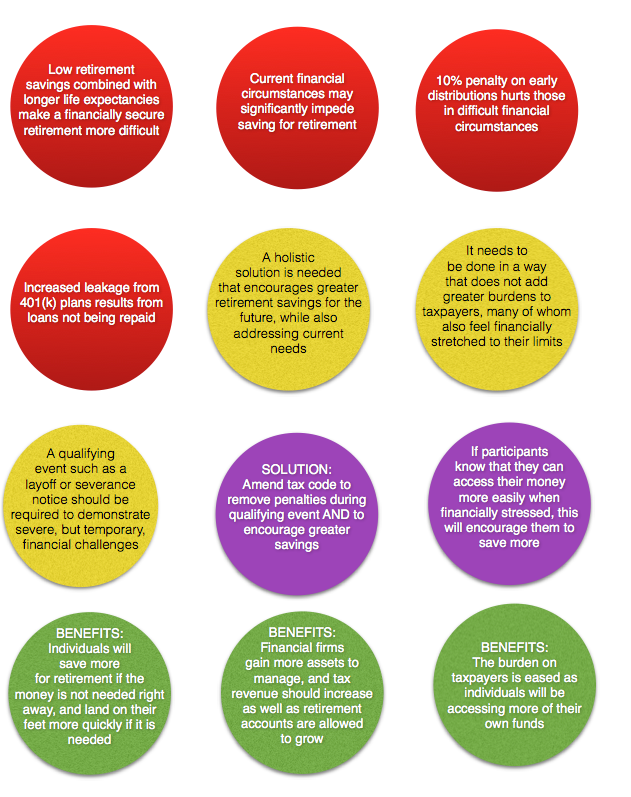|
The headlines:
The 10% early withdrawal penalty was designed to discourage access to retirement funds before what one usually thinks are the retirement years. If it were too easy, then retirement savings would not be there during those retirement years. For many of those who are accessing retirement funds, however, it is more a matter of necessity than of choice. The attached visual piece is an attempt to outline the problem and suggest a solution. It is meant as a starting point, open to fine tuning along the way. If we think of retirement as part of the overall financial picture, and not simply an isolated moment, then I think we can finally generate a more realistic solution. Telling people they need a million dollars for a secure retirement is counterproductive. Helping people solve their own financial riddles will produce positive results.
0 Comments
Leave a Reply. |
Blog Author - Ken FelsherWith over 25 years of writing, editing, and research experience. I enjoy sharing with my readers my love of working with content on a variety of subjects. CategoriesAll 401(k) 402(g) Boomers Catch-up DB Dc Deferral Limit Defined Benefit Defined Contribution ERISA Healthcare Participation Pension Professionally Managed RCS Retirement Retirement Confidence Tax Code Vanguard Women Working Archives
March 2015
|

